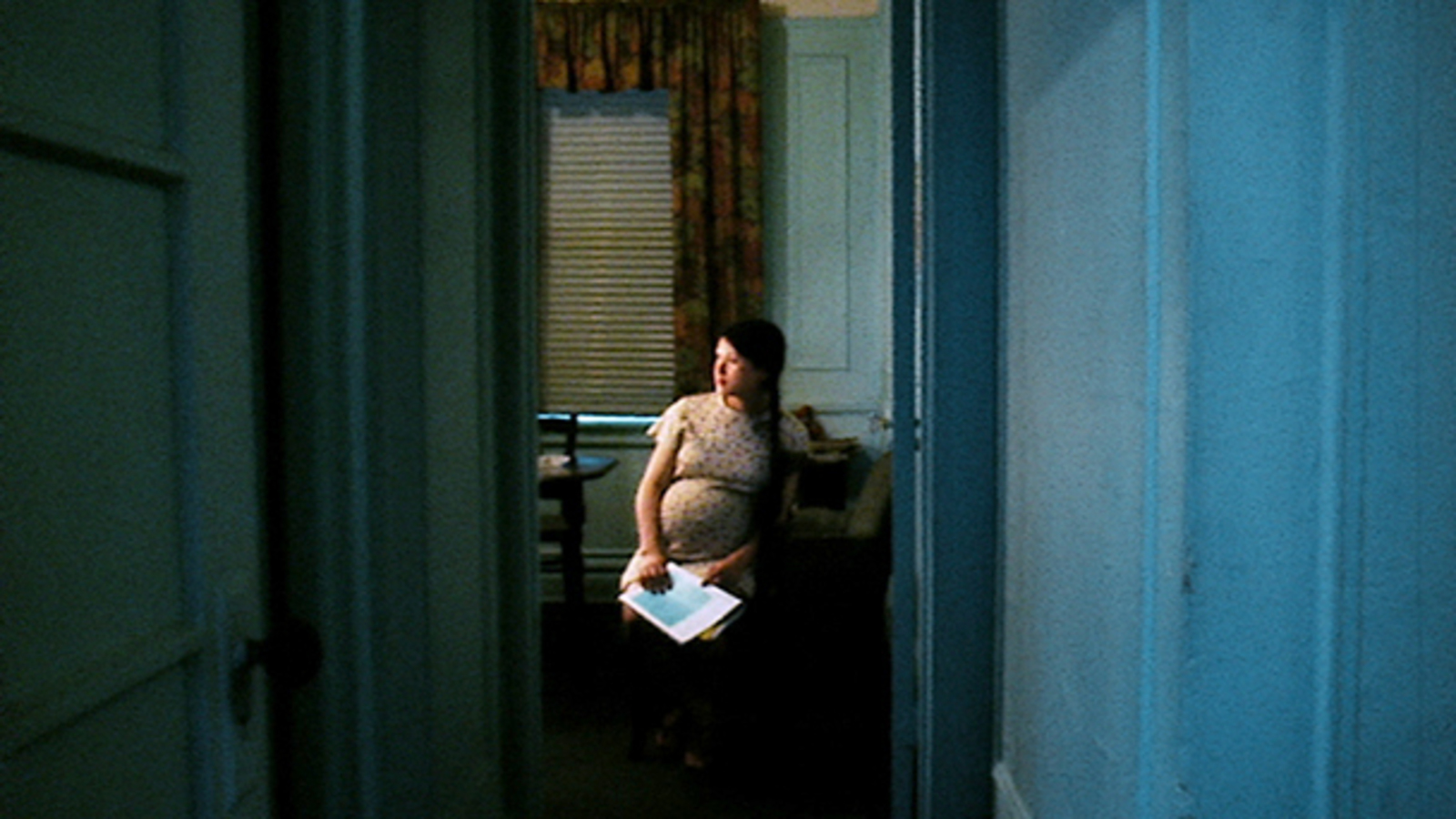
Still from Chantal Akermann, Hotel Monterey (1972)
Filmed in 15 hours with cinematographer Babette Mangolte, Chantal Akerman’s structuralist masterpiece travels from foyer to rooftop, from night into day, in a succession of silent, beautifully framed shots that linger in the common areas, crowded elevators, dim corridors, and mostly vacant rooms of a run-down SRO hotel in New York’s Upper West Side. By contrast, Emily Richardson’s day-to-night sequence, composed of several months’ footage captured in and around a South London tower block, uses a combination of time-lapse, jump cuts, and long takes to create a viewing experience not unlike the “all-seeing-but-seeing-nothing” CCTV monitors in the building’s security office, which flick randomly from one view to another, missing pieces of the inhabitants’ actions. Similarly MIA is Elizabeth Price’s narrator, presented instead as onscreen script, luxuriating in administrative, curatorial, and commercial slogans. It guides us on a meandering tour, punctuated by percussion and song, through the preserved-in-aspic home of an anonymous 1960s art collector.
Hotel Monterey
USA/Belgium 1972
Chantal Akerman
62 min. DCP Silent
Block
United Kingdom 2005
Emily Richardson
12 min. DCP
At the House of Mr X
United Kingdom 2007
Elizabeth Price
20 min. DCP
“To me, [Hotel Monterey] is one of [Akerman’s] most radical films in terms of the experience of time and of a wide-embracing concentration.”
Manon de Boer
“Richardson’s films offer a dazzling deconstruction of place and time. They focus the mind and eye to detail, finding transcendence and emotion in the everyday.”
William Fowler, Curator of Moving Images, BFI
“There is a guilty enchantment about Elizabeth Price’s films. A knowing delight in the material world combined with an almost violent, if not snide, objection to materialism.”
Rose McLaren, Music & Literature
Programmed by Michèle Smith


